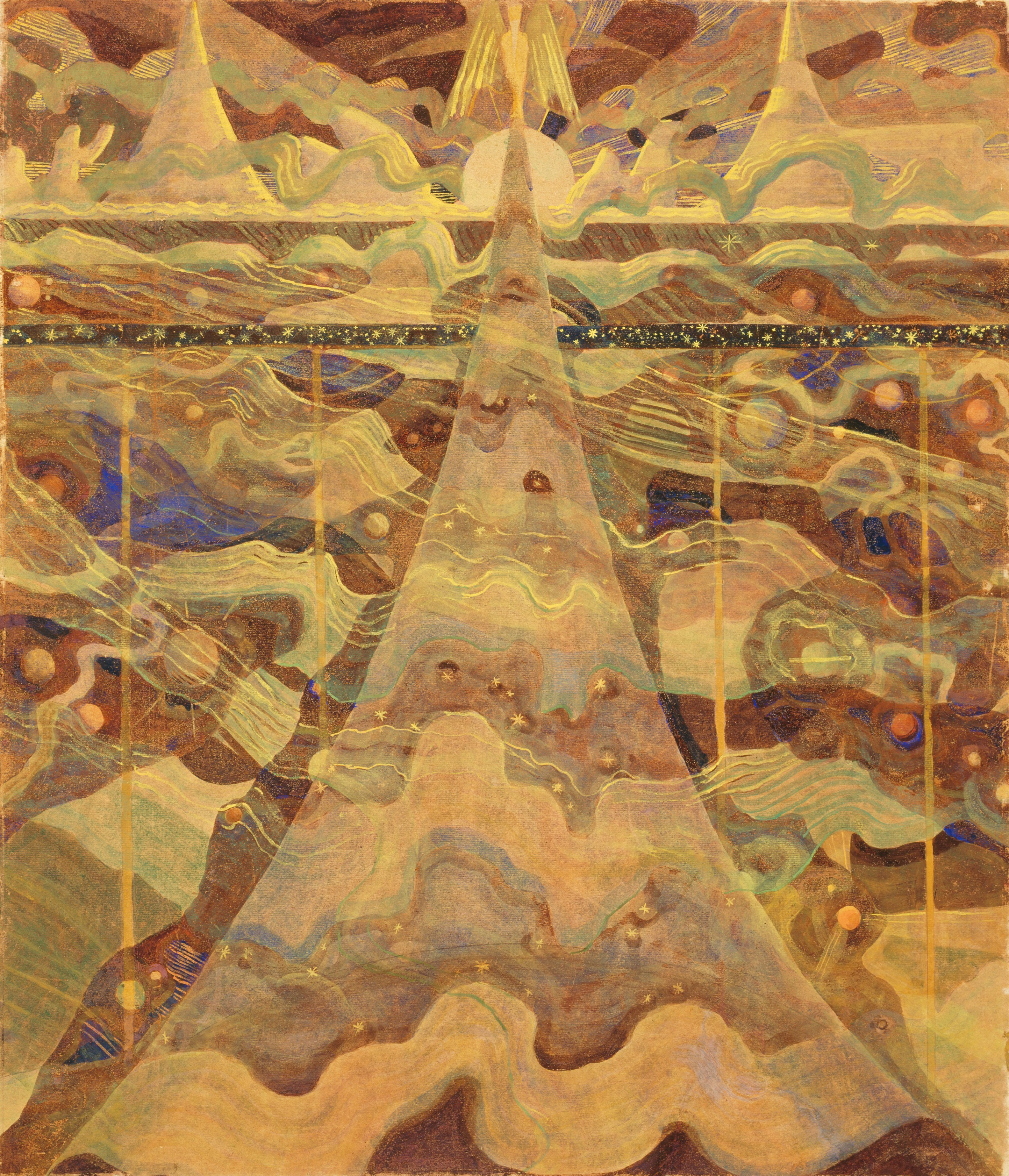Today is our last Sunday with Europeana 280, the multilingual online collection of millions of digitized items from European museums :( On this Resurrection Sunday we present a piece by a Lithuanian artist with whom I immediately fell in love when I discovered his work at a exhibition in Cracow last year. Have a great day!
Mikalojus Konstantinas Čiurlionis (1875-1911), a composer, painter, writer and photographer, was (and still is) a pioneering figure not only in Lithuanian art but also in that of all of Europe. Čiurlionis lived and worked at the turn of the 20th century, when so many new movements in art were forming; in his works he expressed ideas and themes that excited people then (and still do today), searching for answers to the common questions of human existence. Based on a folk creative mentality, his work was enriched by his interest in different philosophical and religious theories, which were popular topics of thought in fin-de-siecle Europe. Čiurlionis’ art embraced the aspirations of person, nation, and epoch, even as it paved the way for the blossoming of European abstract art.
Čiurlionis painted seven pictorial sonatas, numbering rather than naming them (the titles were appended later). This series of works can be associated with the theory of synesthesia, and embody an original approach to the issues of melding music and art. The artist applied to his paintings principles of musical composition, which have associations with the structure of musical forms (such as sonata, fugue, or prelude). He united various motifs from reality and portrayed different spatial levels and moments in time, as well as contrasting symbolic images in a single compositional system (cycle) based on the dynamics of the rhythm.
Sonata of the Stars. Allegro is an artistic vision of outer space. In this sonata, the viewer is presented with fantastical multilayered images. The compositional elements in the painting are arranged in a complex rhythm of different variations. Portrayal of the third dimension no longer uses the perspective of space, instead opting for overlays of varying opacity. Čiurlionis envisions the universe as a magnificent polyphonic symphony of intertwining cosmic mists, stars, and sunlight. The waves of this ocean of space — the melodies — eddy and weave past each other, forming a rich, ornamented, and splendid web pierced by the path of the Milky Way. The movement in outer space is not chaotic, but rhythmical and harmonious. The order and harmony of the Universe is symbolized by the bright figure of an angel standing on a tapering tower of light.




Sonata No. 6 (Sonata of the Stars). Allegro.
tempera on paper • 36.2 x 31.2 cm
 Mikalojus Konstantinas Čiurlionis
Mikalojus Konstantinas Čiurlionis